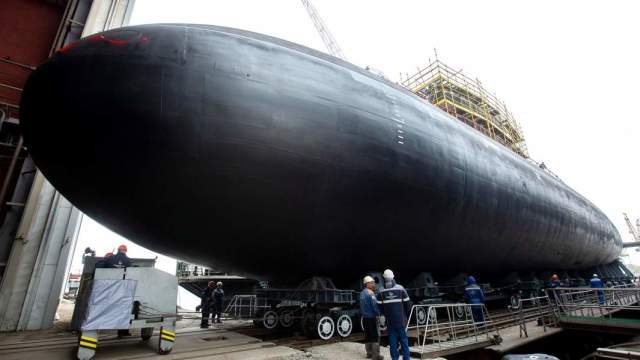

During the peak of the Cold War, the competition between the United States and the Soviet Union ignited multiple technology-driven races in which both nations sought to surpass each other. The space race and nuclear energy — which can be examined in the docuseries Turning Point: The Bomb and The Cold War on Netflix – along with military hardware. One notable creation from the Soviet Navy consisted of a range of remarkable submarine classes constructed from titanium, known as the Sierra-class and Alfa-class submarines. Titanium was an appealing material because it provided superior performance for underwater vessels, boasting an excellent strength-to-weight ratio, resistance to seawater corrosion, and non-magnetic characteristics. This enabled the titanium-composed submarines to dive deeper and remain stealthy against most contemporary detection methods. Seems like a clear advantage. However, utilizing inappropriate materials or designs can lead to a submarine imploding – highlighting the significant challenge deep-sea pressure poses for underwater crafts. The recent Netflix documentary on the Titan submarine effectively illustrates the impact of deep-sea pressure.
In the end, numerous factors contributed to the titanium-hulled submarines being a headache, prompting the United States to abandon the idea. What was the exact issue? Primarily, titanium and its metallurgical properties. High-grade titanium is exceedingly challenging to work with and manage. It demands clean, oxygen-free environments, specialized tools and equipment, along with experienced personnel. Acquiring the material itself was also problematic due to supply chain limitations. Most crucially, because of the stringent requirements, performing adequate field repairs on a titanium hull was nearly impossible without specific tools available. This led to significant challenges concerning battle damage. This is a serious flaw for vessels intended for wartime scenarios. Yet, the Soviet Union made it feasible.
Moscow’s affirmative stance versus the United States’ clear refusal
Why would Moscow and the Soviet Union leaders opt for titanium, while the United States chose not to? Soviet vessels were reputed for being stealthy and swift, at least theoretically, because they employed high-power reactors, a different technology compared to most U.S. equivalents. They could navigate faster, dive deeper, and outperform competitors, and the titanium hull designs aimed to achieve even more. Additionally, the political and administrative context in the Soviet Union was conducive to specialized welding capabilities such as exotic welding facilities or titanium-exclusive mills. These were not private enterprises financing or driving development; rather, they were managed by state-supported initiatives. Furthermore, the non-magnetic features, particularly with the Soviet Union’s proximity to the Arctic, made detection more challenging for NATO and its allies. If executed correctly, Soviet titanium submarines could approach near-undetected into adversarial waters.
The truth is, many challenges associated with titanium as a material, along with its costs, could be managed by the Soviet Union, enabling them to advance the technology. It was simply too expensive for the U.S., and high-grade steel proved more effective globally. Although titanium didn’t provide the acoustic stealth the Soviet Union aimed for. While the material is robust, lightweight, and silent, the noise is predominantly generated by the machinery inside the submarine. Additionally, the United States’ strategy to minimize expenses facilitated maintaining underwater capabilities over the long term, such as repairing battle damage in the field, enhancing technologies like sonars and combat systems, and sustaining a larger, operational fleet for an extended period.